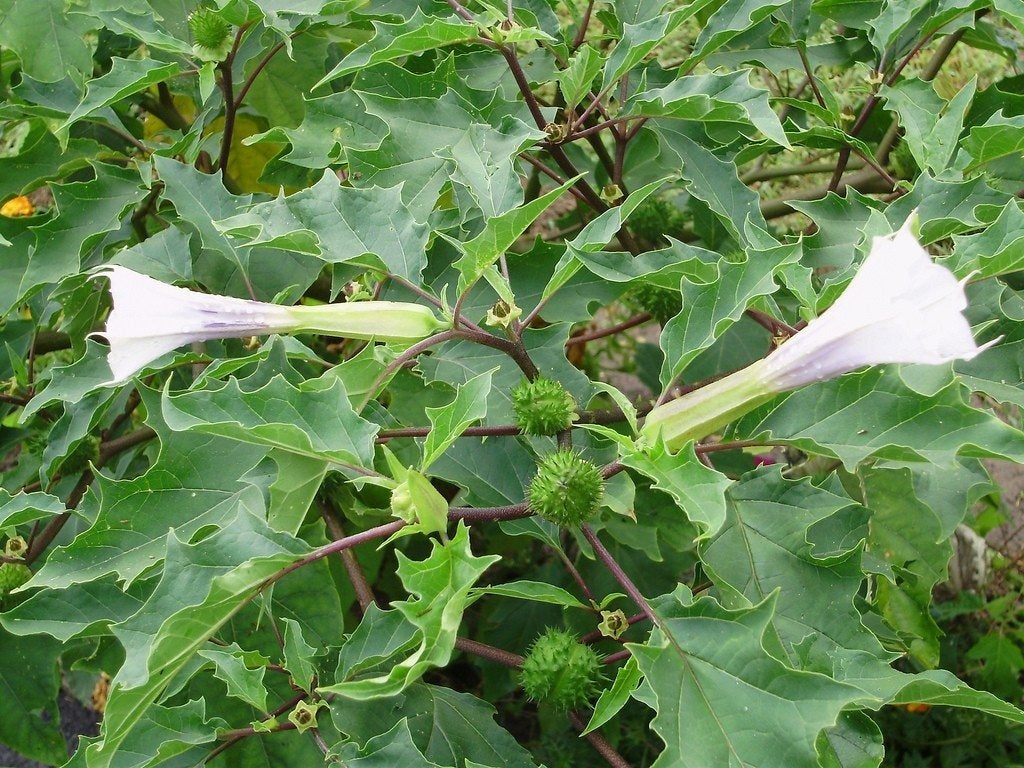Jimsonweed Control: How To Get Rid Of Jimsonweeds In Garden Areas


Nothing spoils a quiet trip through the garden quite like the sudden appearance of aggressive weeds. Although the flowers of jimsonweeds can be very beautiful, this four-foot tall (1.2 m.) weed packs with it a poisonous payload in the form of a spine-covered seedpod. Once this walnut-sized pod breaks open, control of jimsonweed becomes much more difficult. Gardeners seeking jimsonweed information before new seeds scatter are at a distinct advantage in the battle against this beautiful, but treacherous plant.
What is Jimsonweed?
Jimsonweed (Datura stramonium) is a smelly, but lovely, plant that's native to India. It was introduced by colonists as they traveled across the country - the first settlers to notice this weed growing were at Jamestown. Several groups used the poisonous plant tissues and juices for medicinal purposes, including treating burns, coughs and as a painkiller. But before you try it at home, be aware that this Datura plant is extremely poisonous - as little as 10 ounces (280 g.) of plant materials can kill livestock; humans burning or ingesting various parts of this weed have died trying. This plant is easy to identify if you've seen it before, but if you haven't, watch for thick, green to purple stems bearing deeply lobed or toothed leaves. A single purple or white, tube-shaped flower emerges from various spots near the leaf bases, expanding to reach between 2 and 4 inches (5-10 cm.) in length. Jimsonweed is known for its pungent odor and aggressive summer growth.
How to Get Rid of Jimsonweeds
Jimsonweed control can be challenging, since seeds from past seasons can be brought to the surface while tilling. These seeds remain viable for up to a century, and with each pod producing up to 800 seeds, the sheer number of potential jimsonweeds is staggering. Fortunately, these plants are summer annuals and do not reproduce from root sections. When attempting to control jimsonweed in the lawn, regular mowing is often all that's necessary. Once you've had jimsonweed on your property, it may take many seasons to kill off all the seeds, but keeping them mowed so short that they can't produce new seeds will help you wear the stand out. Jimsonweed in the garden may need to be pulled by hand (wear gloves), or sprayed with an herbicide, due to the alkaloids it releases from its roots - these compounds are very dangerous to many other plants. When pulling this weed, it's normally recommended that you bag the plant and its seeds in a plastic bag for disposal. (Since seeds remain viable for such a long period, it is a good idea to allow the bag to sit for up to a year or more.) Pre-emergent herbicides can be applied to your garden spot before planting time if jimsonweed is a yearly problem. Note: Chemical control should only be used as a last resort, as organic approaches are safer and much more environmentally friendly.
Sign up for the Gardening Know How newsletter today and receive a free copy of our e-book "How to Grow Delicious Tomatoes".

Kristi Waterworth was a regular contributor to Gardening Know How for many years, answering countless queries on plant pests and diseases.